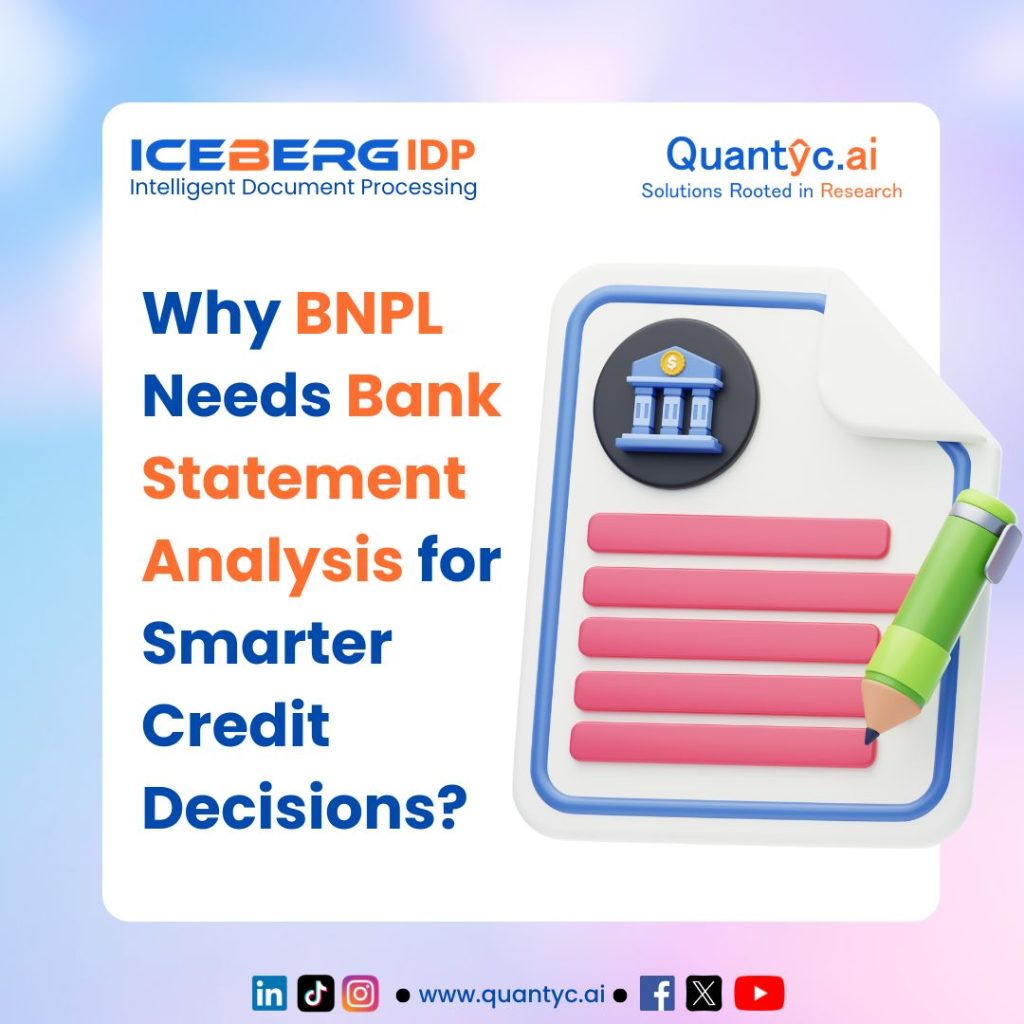The Buy Now, Pay Later (BNPL) sector has experienced rapid growth, offering consumers the convenience of immediate purchases with deferred payments. However, this convenience introduces significant challenges for BNPL providers, particularly in assessing the creditworthiness of applicants who may lack traditional credit histories. To mitigate risks and make informed lending decisions, BNPL providers are increasingly turning to Bank Statement Analysis as a vital tool.

Understanding the BNPL User Profile
BNPL users often differ from traditional credit consumers. Studies indicate that BNPL users are typically younger, have less education, carry higher debt burdens, and possess lower credit scores. Consequently, delinquency rates among BNPL users are higher compared to traditional credit products.
Further research reveals that BNPL users have significantly lower liquid assets, with average checking account balances substantially less than non-users. Additionally, a higher percentage of BNPL users revolve on their credit cards, indicating potential financial instability.
The Imperative of Bank Statement Analysis
Given the unique profile of BNPL users, traditional credit assessment methods may not suffice. Bank Statement Analysis offers a comprehensive view of an applicant’s financial behavior, enabling BNPL providers to:
- Assess Income Stability: By examining regular deposits, providers can determine if an applicant has a consistent income stream, which is crucial for timely repayments.
- Evaluate Spending Patterns: Analyzing expenditures helps identify responsible spending habits versus impulsive or high-risk behaviors, such as excessive gambling or frequent overdrafts.
- Identify Existing Debt Obligations: Reviewing outgoing payments allows providers to gauge current debt levels and assess the applicant’s capacity to manage additional credit.
- Detect Fraudulent Activities: Unusual transactions, like large one-time withdrawals or inconsistent deposits, can signal potential fraud, enabling providers to take preventive measures.
Enhancing Risk Management
The Office of the Comptroller of the Currency (OCC) emphasizes the importance of robust risk management in BNPL lending. This includes implementing controls to mitigate fraud risks and conducting thorough assessments to understand potential vulnerabilities.
Moreover, the unique structure of BNPL services, which often lack traditional credit checks, can lead to consumers accumulating debt across multiple BNPL providers without a comprehensive assessment of their overall financial obligations. This underscores the need for BNPL providers to adopt more holistic approaches, such as Bank Statement Analysis, to gain a complete picture of an applicant’s financial health.
Promoting Financial Inclusion
By leveraging Bank Statement Analysis, BNPL providers can extend credit to individuals who may be excluded from traditional lending due to a lack of credit history. This approach allows for a more accurate assessment of an applicant’s financial behavior and capacity, promoting financial inclusion while maintaining prudent lending practices.
Conclusion
As the BNPL sector continues to grow, integrating Bank Statement Analysis into the credit assessment process is essential for making informed lending decisions. This strategy not only mitigates risks associated with lending to higher-risk profiles but also promotes responsible lending and financial inclusion.
Sources:
- Bank for International Settlements. “Buy now, pay later: a cross-country analysis.” December 2023.
- Federal Reserve Bank of Boston. “Buy Now, Pay Later: Who Uses It and Why.” June 2024.
- Office of the Comptroller of the Currency. “Retail Lending: Risk Management of ‘Buy Now, Pay Later’ Lending.” December 2023.
- Bank for International Settlements. “Buy now, pay later: a cross-country analysis.” December 2023.